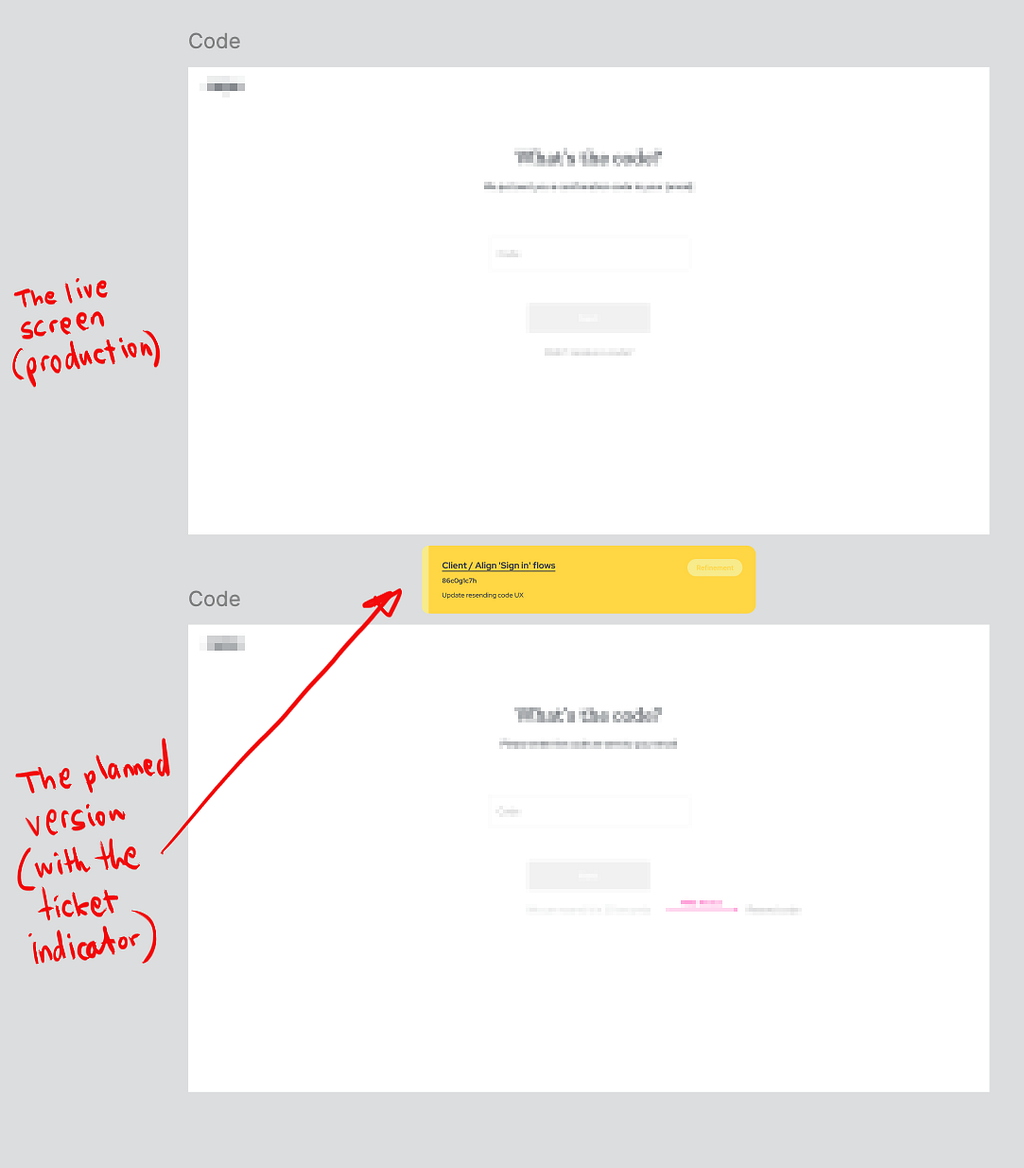
Managing product design: balancing production and planned efforts
uxdesign.cc
Managing productdesignBalancing production and plannedeffortsAs a staff product designer in various startups, I build designs from the ground up, balancing immediate tasks with long-term goals. I can work several steps ahead of production or juggle multiple features with varying priorities and implementation ETAs.I needed to design an internal solution to help me quickly map and manage the following:Current production statusEasily view the end-to-end product flow (aka the live version), including key touchpoints, notifications triggered by user actions, micro-interactions, andcontent.Planned efforts and their statusQuickly identify any ongoing efforts before initiating new solutions. This is crucial for determining whether to replace, complete, or abandon the plannedeffort.Managing multiple versions of elementsDevelop a clear strategy to manage both short- and long-term versions of elements, ensuring consistency, tracking changes, and aligning with evolving productneeds.Freezing the dev version for updatesEstablish a method to lock the design for the dev team, ensuring it stays synced with a specific ticket while allowing me to continue refining the design for futurephases.Start with the No ticket, no designruleSince the pulse of implementation lies in the tickets, I established a rule: No design would be created or modified without a ticket. Whether it was a text update or a new screen, there had to be a ticket detailing the why and thehow.This approach effectively ended the tiny tweaks I used to make on the fly and consolidated everything into the same pipeline. Assuming small tweaks would be implemented immediately was a mistake. This system helped avoid situations where I thought something was live, but itwasnt.Sync tasks with the design workspaceI started by integrating Figma (where the content design lives) and Miro (where the flows are) with the ticket number and a directlink.Elements reflecting production had no indication. For advanced versions of the same element, I duplicated a new version below the current one. Above the duplicate, I added a ticket indicator, task name, direct link, and a summary of thechanges.Then, I started working on the design. In other words, I didnt override the current design with a new one; instead, I kept both versions, one above the other, along with a reference to the detailedticket.The top shows the screen as it appears in production (without an indicator). The bottom shows the updated, pending implementation, screen (with the ticket indicator).The first screen shows a new design, the second shows the planned update below the production version, and the remaining three are in production.In some cases, I didnt duplicate the design but had a list of open tickets. Its really about what feels right and does thejob.The ClickUp tickets as shown in Figmamy notes immediately told me what each task wasabout.How to create the indicatorI started with a basic indicator I designed. While it indicated an open task and directed to the ticket, it wasnt updated with the status, and I had to wait for the release note to make the updates. Later on, I discovered that ClickUp (the task management platform I recently worked with) had a great plugin for Figma, integrating the two apps and allowing for status updates with a single clickTicket Sync. Theres also a built-in integration forMiro.The great thing about this approach is that it lets you quickly see the efforts for each section of the product and easily zoom in for moredetails.Another valuable perk: you can quickly scan the design for specific statusessuch as identifying tasks that need refinement or those already releasedfor easy comparison with release notes. It also helps map all efforts under the same task by searching for the taskID.Searching task statuses in Figma for a birds-eye view of the implementation progress.The same goes for Mirothe ticket indicates there are changes in the flow. I used red to highlight thechanges.Freeze designs (to keep developers cool)Once the design was ready for dev, I duplicated it into a dedicated Figma file, naming it with the ticket number. This file is attached to theticket.In the dedicated Figma file, new items were marked along with the detailed ticket, while unrelated parts to the specific effort were removed or blurred, making it clear they were not part of the ticket. In other words, its a frozen version of the design for the specific ticket, as agreed during refinement.This approach allows me to continue working on my design while maintaining a single version that includes all designefforts.As a lead designer in a startup environment, this approach is the key to staying organized and maintaining clear communication in the ever-shifting startup landscape. By linking design work directly to tickets and using a structured workflow, I can stay on top of production while also keeping product managers and stakeholders informed. This system has proven essential in streamlining my design process and ensuring everyone is aligned, helping us move forward efficiently without losing sight of the biggerpicture.Managing product design: balancing production and planned efforts was originally published in UX Collective on Medium, where people are continuing the conversation by highlighting and responding to this story.
0 Comments
·0 Shares
·136 Views


